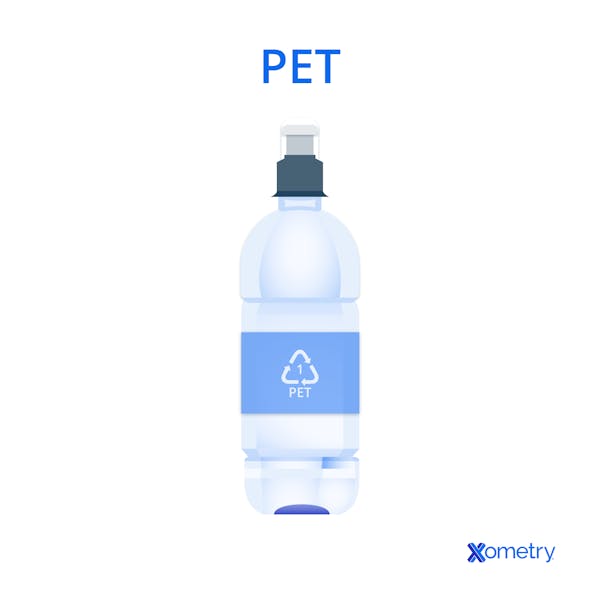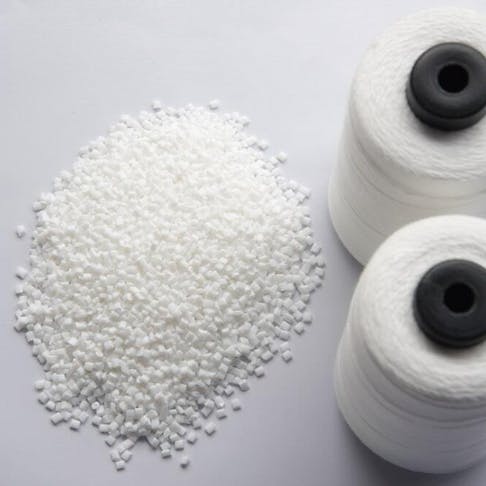PET (polyethylene terephthalate) is the most common type of polyester material on the market. It is valued for its excellent mechanical, electrical, chemical resistance, and thermal properties. PET was patented in 1941 by Dickson and Whinfield when they combined phthalic acid with glycol-based substances. When used for fabric, PET is known as polyester, though it’s not technically the only form of polyester. Modern PET is composed of ethylene glycol and terephthalic acid. Ethylene is a colorless liquid derived from glycol while terephthalic acid is a solid crystal that comes from xylene. Beyond clothing, you’re likely to find PET employed for waterproofing, bottling, food packaging, Tupperware, and insulated bottles. This article will discuss PET primarily in the context of 3D printing and look at its uses, properties, and applications.
What is PET 3D Printing?
PET 3D printing is the process of creating a three-dimensional part using PET (polyethylene terephthalate) via additive manufacturing. This type of PET is a stiff, strong material used to make products for waterproofing, bottling, and food packaging. It’s one of the most popular materials for FDM/FFF-style 3D printing due to its chemical resistance, mechanical properties, and favorable melting temperature of 260°C. For more information, see our guide on 3D printing.
Composition of PET Filament
Polyethylene terephthalate is a type of polyester made through an esterification reaction of ethylene glycol and terephthalic acid. The ethylene content makes it colorless. The higher percentage of the repeated aromatic units in the polymer chain gives it strength and toughness. PET is valued for its good chemical resistance, mechanical and thermal qualities, and dimensional stability owing to its polyester structure.
Due to its thermal strength, PET 3D printing filament is used for automobile tire yarns, drive belts, seat belts, and fire hoses. It has largely replaced nylon. The chemical resistance of PET prevents it from reacting with food or water and thus makes it excellent for food packaging.
Properties of PET Filament
The desirable properties of PET filaments are:
- PET filament has excellent mechanical, electrical, and thermal properties.
- Has good flow properties and low absorption features.
- It is FDA-approved for food containers
Comparison of PET Filament Properties
Table 1 compares the properties of PET, PETG, PLA, and ABS filaments.
| Properties | PET | PETG | PLA | ABS |
|---|---|---|---|---|
Properties Recycled content | PET 100% | PETG 67% | PLA 55% | ABS 65% |
Properties E-modulus | PET 2300 MPa | PETG 2020 MPa | PLA 3120 MPa | ABS 1900 MPa |
Properties Tensile strength at yield. | PET 57 MPa | PETG 50.4 MPa | PLA 38 MPa | ABS 44 MPa |
Properties Print temperature | PET 220-250°C | PETG 220-235°C | PLA 180-230°C | ABS 210-250°C |
Properties Density | PET 1.4 g/mL | PETG 1.27 g/mL | PLA 1.24 g/mL | ABS 1.03-1.14 g/mL |
Properties Elongation at break | PET 70% | PETG 130% | PLA 7% | ABS 10-50% |
Properties Flexural Strength | PET 82.5MPa | PETG 70 MPa | PLA 106 MPa | ABS 2400 MPa |
Properties Hardness | PET 82 | PETG 106 | PLA 88 | ABS 100 |
Properties Glass transition temperature | PET 70°C | PETG 85°C | PLA 56.9°C | ABS 105°C |
Properties Heat deflection temperature | PET 71.6-80.0°C | PETG 71- 103°C | PLA 52°C | ABS 73°C |
Advantages and Disadvantages of PET 3D Printing
The advantages of 3D printing with PET filaments are:
- It is strong and affordable.
- The combination of its chemical resistance, thermal resilience, and mechanical strength makes PET filament a good fit for food packaging and bottled drinks.
- PET is completely recyclable and is often recycled in large quantities. Its recyclability helps limit its negative impact on the environment.
- It is transparent and can easily be colored for different effects and uses.
- It does not emit a toxic chemical odor like ABS.
The disadvantages of 3D printing with PET are:
- The crystalline form of PET is neither as strong nor as moldable as similar but more malleable polymers.
- It is prone to warping during printing, so care should be taken to evenly distribute temperature within the build volume.
- It becomes brittle when it absorbs moisture. Store PET in a dry, airtight container after use.
- It requires a low printing speed so that each printed layer can cool before the next one gets applied. This keeps the surfaces smooth and more even.
Use of PET in 3D Printing
PET is unique in that it is virtually shatterproof. It has excellent dimensional stability, good heat resistance, and strong chemical resistance. These properties make PET a desirable material for bottles, containers, and food packaging. It also makes it more resistant to tears.
Listed below are some tips on how to effectively print PET:
- Print in an enclosed chamber to maintain an even temperature distribution. This enclosed chamber prevents warping and rough surfaces.
- Allow newly printed parts to cure at room temperature for four hours.

| Printer Settings | Value |
|---|---|
Printer Settings Extruder temperature | Value 265-300°C |
Printer Settings Print bed temperature | Value 60-100°C |
Printer Settings Nozzle temperature | Value No higher than 300°C |
Printer Settings Print speed | Value 50-100 mm/s |
Printer Settings Metering temperature | Value 230°C |
Printer Settings Mold temperature | Value 140-160°C |
Printer Settings Retraction speed | Value 30-80 mm/s |
Printer Settings Retraction distance | Value 2-5 mm |
Printer Settings Layer height | Value 0.25 mm |
Printer Settings Bed material | Value Glass surface |
Summary
How Xometry Can Help
Xometry provides a wide range of manufacturing capabilities including CNC machining, 3D printing, injection molding, laser cutting, and sheet metal fabrication. Get your instant quote today.
Disclaimer
The content appearing on this webpage is for informational purposes only. Xometry makes no representation or warranty of any kind, be it expressed or implied, as to the accuracy, completeness, or validity of the information. Any performance parameters, geometric tolerances, specific design features, quality and types of materials, or processes should not be inferred to represent what will be delivered by third-party suppliers or manufacturers through Xometry’s network. Buyers seeking quotes for parts are responsible for defining the specific requirements for those parts. Please refer to our terms and conditions for more information.


